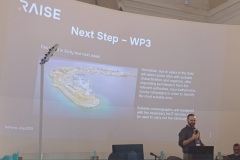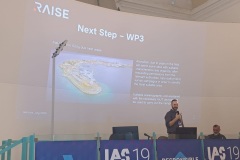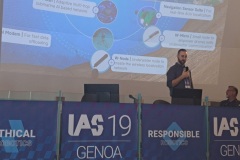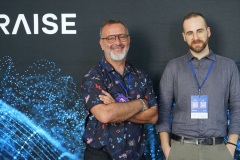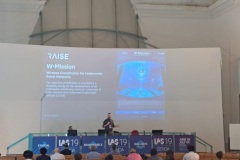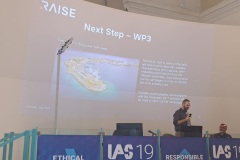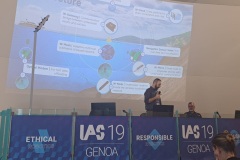W-Mission project presented in Genoa: wireless underwater communication for autonomous robotic networks

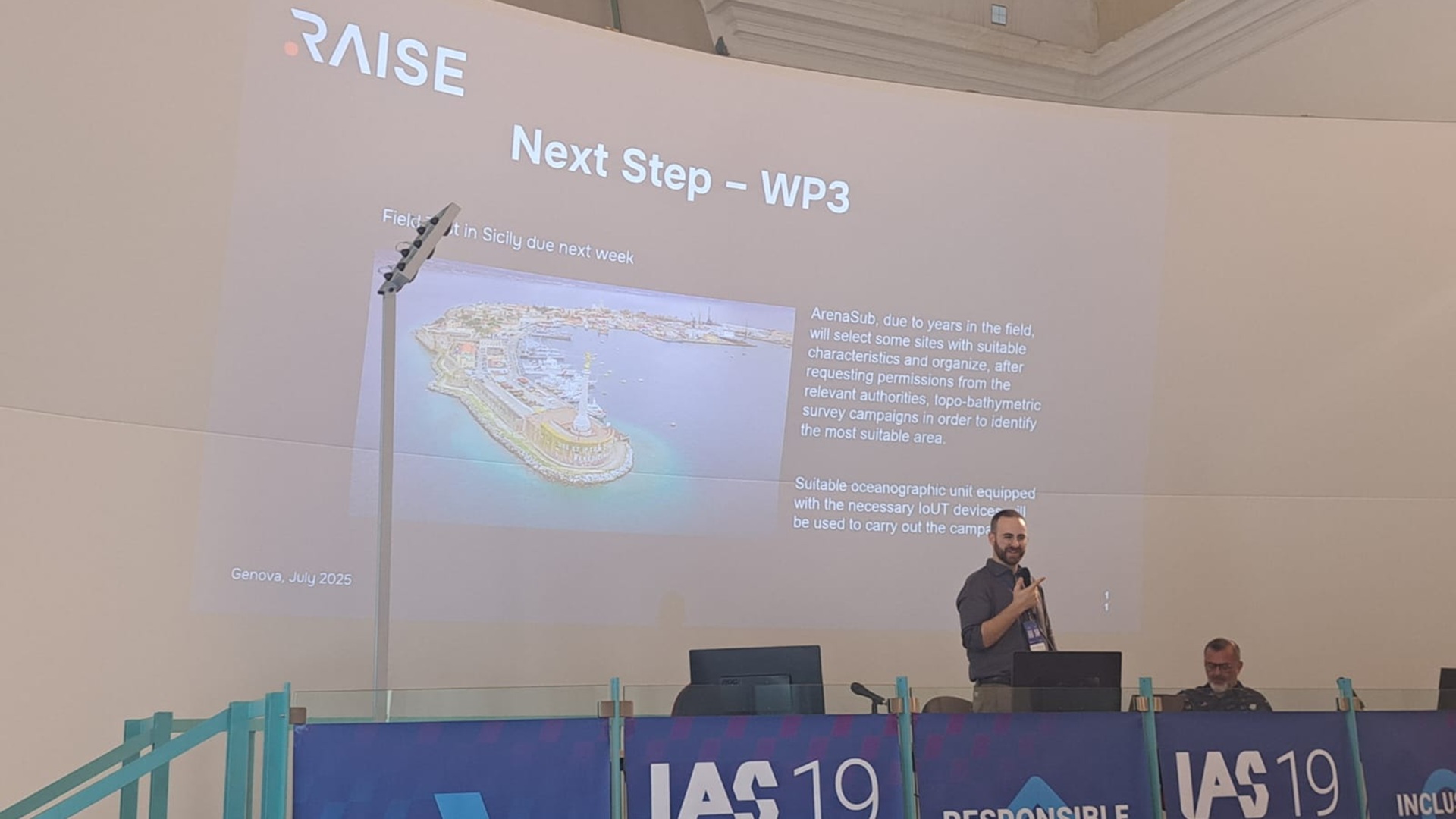
On July 2, 2025, during the 19th edition of the International Conference on Intelligent Autonomous Systems (IAS), currently taking place in Genoa until July 4, the W-Mission – Wireless Coordination for Underwater Robot Networks project, part of Spoke 3 of the RAISE program, was officially presented. The initiative was introduced by Cosimo Palmisano and Luca Iezzi.
W-Mission aims to carry out a feasibility study for the development of an underwater monitoring network, consisting of static sensors and Unmanned Underwater Vehicles (UUVs).
The proposed infrastructure is based on WSense technology, an acoustic communication platform that “gives voice to the ocean”, enabling continuous, high-density, large-scale collection of environmental data from the sea. Over 2 million data points have already been collected through interconnected wireless sensors.
The fixed network, built with WNodes, serves as an underwater communication infrastructure (UCI), enabling both the integration of heterogeneous sensors and the real-time exchange of data and commands. ROVs/AUVs, equipped with miniaturized WNodes, are able to receive instructions while underwater and adapt their missions based on context and environmental conditions, thanks to bidirectional multihop wireless communication.
During the presentation, the main work packages of the project were illustrated. WP1 described an operational scenario in which the vehicle initially followed a predefined route and, upon entering the acoustic range of one or more WNodes, received mission packets containing the target position, WNode coordinates, and environmental parameters to be measured. The vehicle then abandoned the initial route and moved toward the designated area of interest, following a circular path to collect data.
In WP2, a physical simulator was developed to test interactions between WNodes and ROVs/AUVs, based on the ROS platform, in order to evaluate performance metrics such as localization accuracy, mission duration, and system lifespan.
The next step, announced during the presentation, will be the launch of field testing campaigns in Sicily, coordinated by ArenaSub. Suitable sites will be selected, and topo-bathymetric surveys will be conducted using oceanographic units equipped with Internet of Underwater Things (IoUT) devices.
The project demonstrates wide application potential, including: defense and critical infrastructure, offshore energy, smart cables and pipelines, hydroelectric basins, environmental monitoring, seismic and volcanic events, and desalination plants.
Cosimo Palmisano commented: “The participation of WSense in Spoke 3 of the RAISE project has represented a strategic step in the development of our solution for the coordination of autonomous underwater vehicles via wireless communication. Thanks to RAISE and the W-Mission project, we can accelerate the transition to market with concrete solutions for the digitalization of the marine environment. The Ligurian innovation ecosystem is an essential catalyst for enhancing deeptech technologies and enabling a sustainable and connected blue economy.”
The IAS 2025 conference, this year dedicated to the theme “Ethical, Responsible, and Inclusive Robotics”, has offered an important opportunity for dialogue among the scientific community, businesses, and institutions, highlighting the crucial role of autonomous technologies in building a more equitable and sustainable future.


